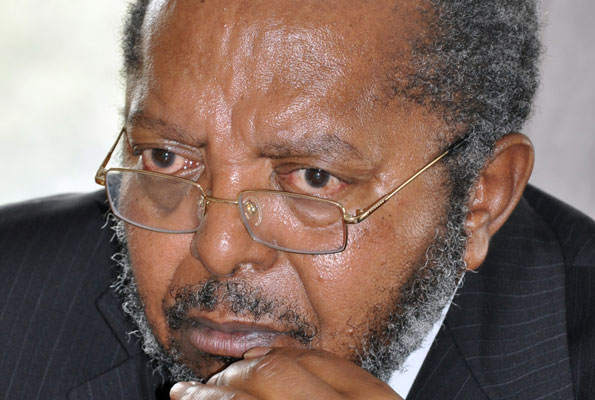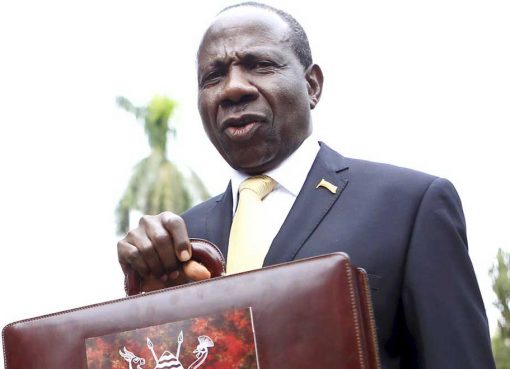Director of Public Prosecutions Noordin Haji speaks in a panel discussion on inequality during a past meeting hosted by The Ford Foundation. FILE PHOTO | DIANA NGILA | NMG
The gap between Kenya’s richest and poorest widened after a dip during the peak of the coronavirus pandemic, with the wealthiest taking home a record share of the nation’s income.
Income inequality rose to 38.9 percent in 2021, from 35.8 per cent a year earlier, according to the Kenya Nation Bureau of Statistics (KNBS) data made public on Thursday.
This is measured by the Gini coefficient, which varies from 0 percent in cases of perfect equality to 100 percent in the most unequal distribution.
Inequality dropped during the pandemic as high earners suffered bigger percentage drops in earnings, while the poorest benefited from a temporary increase in benefits which was withdrawn in early 2021.
The KNBS data expose the extent to which wealth distribution is skewed in favour of a tiny clique, with Nairobi having the widest income inequality among Kenya’s devolved units.
A Gini coefficient mark of 40 percent is viewed by analysts as the point at which social dissatisfaction may come to a head.
“Overall, the poorest quintile accounts for 7.4 percent of total consumption while the richest quintile accounts for 42.2 percent of consumption implying significant disparities in welfare,” said KNBS in a report that also showed that the number of poor Kenyans reduced by over a million.
The earnings inequality has partly been attributed to the previous centralised system of government, which guided sharing of resources since Independence.
The devolved system of government, which took off in 2013, raised hopes of addressing the economic imbalance, as analysts say there is a need to offer incentives to attract private investors to counties and spread the wealth.
Modest economic activity in the past three years has entrenched income inequality, with fewer jobs and stagnant pay hurting the middle-class most.
While the size of the country’s economy has been growing, the wealth is concentrated in the hands of a small segment of the population.
The gulf between the rich and poor based on the Gini coefficient widened from 39.1 percent in 2016 to 40.7 percent in 2019.
In 2020, when the Covid-19 pandemic ravaged Kenya’s economy the most, the inequality eased with a measure of 35.8 percent.
Covid-19 has unleashed an economic storm that hit the poor and vulnerable hardest, prompting the World Bank to warn that more than 100 million people were pushed into extreme poverty by the pandemic.
It could take more than a decade to reduce the number of people living in poverty back to pre-crisis levels, said development NGO Oxfam International.
The trend of the widening wealth gap between the rich and the poor during and after the pandemic was global.
Billionaires, including Amazon’s Jeff Bezos and Tesla founder Elon Musk, have seen their wealth soar during and after the pandemic while the world’s poor faced years of hardship.
This prompted charity Oxfam to demand steps to tackle inequality.
In Kenya, President William Ruto won a hotly contested election last August on a platform of planning to lift millions out of poverty, but he is facing challenges from the high cost of living and growing debt repayments.
The poverty report, which was released on Thursday, shows that a fifth of the country’s rich population accounted for over 40 percent of the country’s total spending.
Interestingly, Kenya’s richest county, Nairobi, and the poorest, Turkana, according to official data, have the highest and second highest inequality respectively.
Inequality levels in the two counties are higher than the national rate.
Nairobi, Kenya’s capital city and commercial hub, had the widest gap between the rich and the poor with a Gini coefficient of 40.9 percent—breaching the red line for social upheaval.
Turkana had 39.9 percent, Nandi 36.8 percent, Kitui 35.7 percent, Machakos 35.3 percent, and Meru 35.1 percent.
The least unequal county is Vihiga with a Gini coefficient of 21.1 percent, followed by Makueni (22.6 percent), Bomet (23 percent), Busia (23.7 percent), and Nyandarua (23.8 percent).
The number of dollar multimillionaires in Kenya more than doubled in the decade to 2022 after individuals with a net worth of Sh620 million ($5 million) and above rose to 1,890 in a decade.
Read: A third of Kenya’s middle class heartbeat away from poverty
This was contained in a report by Oxfam, Patriotic Millionaires, the Institute for Policy Studies and Fight Inequality Alliance, which draws its data from Forbes and Wealth X.
Of the 1,890 individuals, 130 have a net worth of over Sh6.2 billion ($50 million) and a combined wealth of Sh2.3 trillion ($18.7 billion).
According to the report, the number of Kenyans worth more than Sh620 million rose by 72.4 percent since 2012, while those with a net worth higher than $6.2 billion expanded by 64.3 percent.
Globally, the report reveals that taxing the ultra-rich could yield up to Sh210.8 trillion ($1.7 trillion) in revenues to help tackle inequality.
In Kenya, the report suggests a wealth tax of two percent on millionaires and three percent on those with wealth above Sh6.2 billion would raise Sh90.5 billion ($730 million) annually, a figure enough to increase education spending by 14 percent and health by 34.3 percent.
Kenya does not have a wealth tax and has in the Finance Bill before Parliament proposed to raise the top income tax rate to 35 percent from 30 percent for workers earning above Sh500,000 monthly.
The Finance Bill, which would hike taxes on fuel, money transfer and housing, has drawn sharp criticism from civil servants and political opponents, who say that the cost of living is already too high.
-Business Daily





